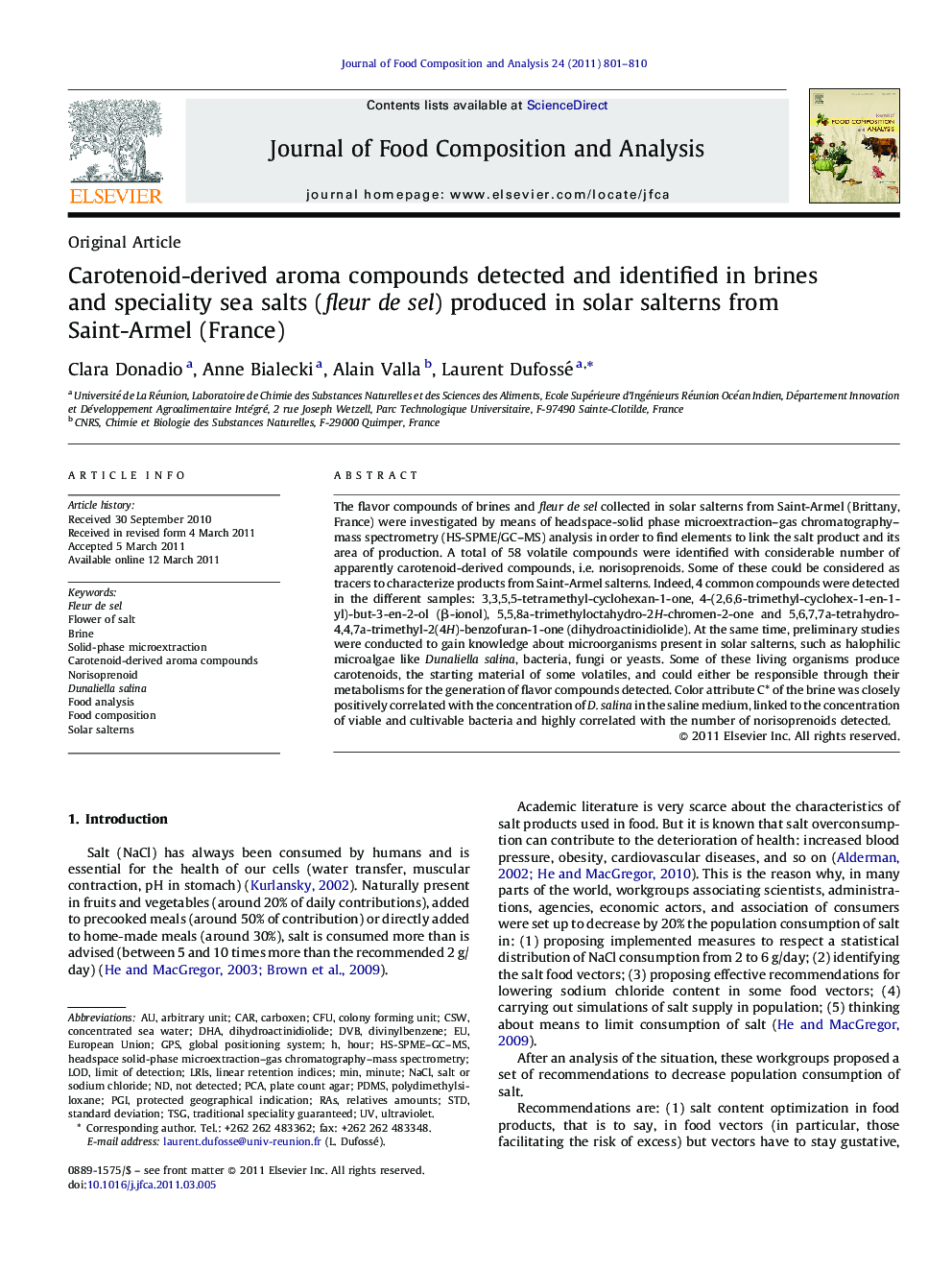| Article ID | Journal | Published Year | Pages | File Type |
|---|---|---|---|---|
| 10552850 | Journal of Food Composition and Analysis | 2011 | 10 Pages |
Abstract
The flavor compounds of brines and fleur de sel collected in solar salterns from Saint-Armel (Brittany, France) were investigated by means of headspace-solid phase microextraction-gas chromatography-mass spectrometry (HS-SPME/GC-MS) analysis in order to find elements to link the salt product and its area of production. A total of 58 volatile compounds were identified with considerable number of apparently carotenoid-derived compounds, i.e. norisoprenoids. Some of these could be considered as tracers to characterize products from Saint-Armel salterns. Indeed, 4 common compounds were detected in the different samples: 3,3,5,5-tetramethyl-cyclohexan-1-one, 4-(2,6,6-trimethyl-cyclohex-1-en-1-yl)-but-3-en-2-ol (β-ionol), 5,5,8a-trimethyloctahydro-2H-chromen-2-one and 5,6,7,7a-tetrahydro-4,4,7a-trimethyl-2(4H)-benzofuran-1-one (dihydroactinidiolide). At the same time, preliminary studies were conducted to gain knowledge about microorganisms present in solar salterns, such as halophilic microalgae like Dunaliella salina, bacteria, fungi or yeasts. Some of these living organisms produce carotenoids, the starting material of some volatiles, and could either be responsible through their metabolisms for the generation of flavor compounds detected. Color attribute C* of the brine was closely positively correlated with the concentration of D. salina in the saline medium, linked to the concentration of viable and cultivable bacteria and highly correlated with the number of norisoprenoids detected.
Keywords
CarboxenRASHS-SPME–GC–MSSTDTSGNaClDunaliella salinaDVBPDMSCSWPGICFUPCAbrineEuropean UnionUltravioletstandard deviationsolid-phase microextractionFood analysisFood compositionnot detectedMinsolar salternsminuteDHAdivinylbenzeneHourGPSGlobal Positioning Systemlinear retention indicesPlate Count AgarLodCARlimit of detectionProtected geographical indicationArbitrary UnitPolydimethylsiloxanecolony forming unit
Related Topics
Physical Sciences and Engineering
Chemistry
Analytical Chemistry
Authors
Clara Donadio, Anne Bialecki, Alain Valla, Laurent Dufossé,
